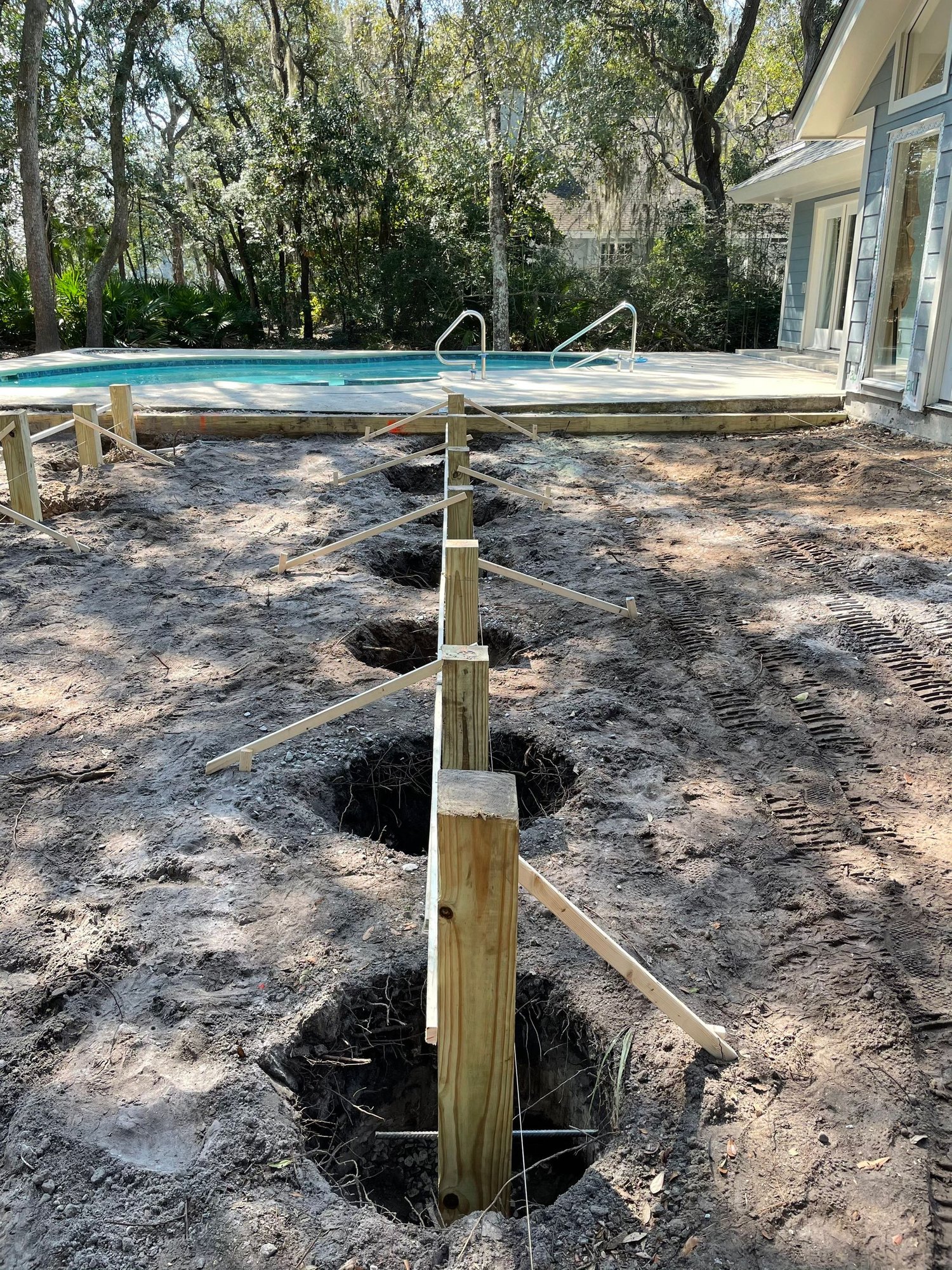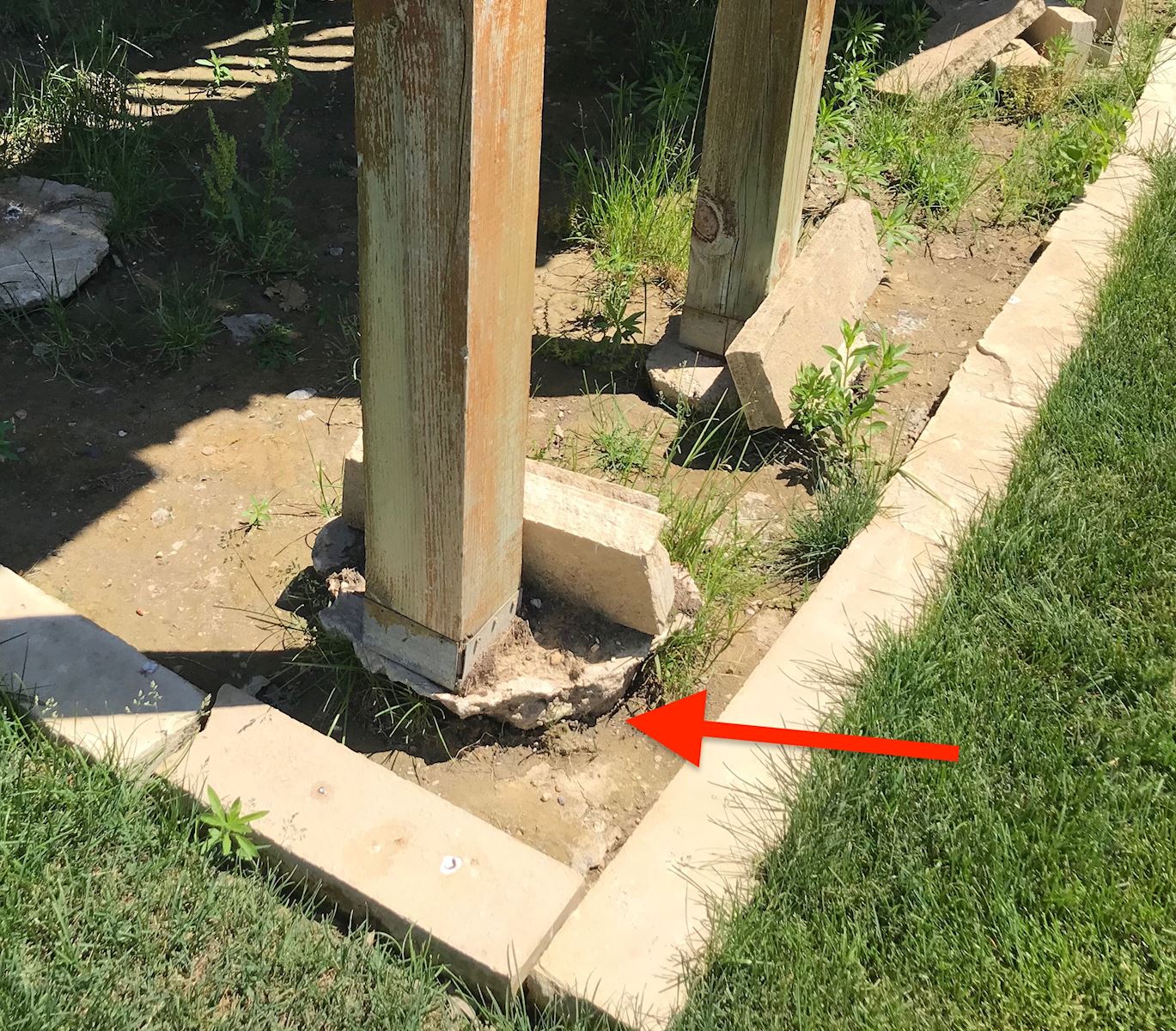Deck Footings Demystified: Your Blueprint for a Safe, Lasting Outdoor Sanctuary
Deck Footings Demystified: Your Blueprint for a Safe, Lasting Outdoor Sanctuary
Blog Article
Choosing the Right Deck Footings for Stability and Longevity
The long life and safety of your deck depend heavily on the type of footings you select, as they provide the important assistance and stability to endure the examination of time. In this conversation, we will certainly check out the various types of deck grounds, take into consideration the important variables to evaluate when making a choice, and delve right into the pros and cons of various choices.
Kinds of Deck Grounds
There are several types of deck grounds that can be utilized, each offering unique benefits and factors to consider. One usual sort of footing is the concrete pier footing. These grounds consist of a round hole loaded with concrete, which offers a solid foundation for the deck articles. Concrete pier footings are fairly easy to mount and use outstanding security, making them a prominent choice for several deck jobs.
Another sort of footing is the helical heap footing. Helical piles are steel shafts with helical plates connected to them. These footings are mounted by screwing them into the ground, which produces a safe and secure structure for the deck. Helical pile footings are excellent for areas with difficult dirt problems, as they can be set up in nearly any kind of kind of dirt. If needed., they additionally permit for very easy adjustment and progressing of the deck.
Conversely, some building contractors go with precast concrete footings. These grounds are made from durable concrete and come in various sizes and shapes to accommodate various deck styles. Precast concrete footings are convenient to mount and supply a stable base for the deck framework.
Ultimately, an additional choice is the post-in-anchor footing system. This kind of ground entails driving a steel support into the ground and affixing it to the deck message. It uses adaptability in terms of positioning the deck messages and is suitable for decks with lightweight frameworks.
When selecting the best sort of deck footing, it is necessary to consider variables such as dirt conditions, deck load, and regional building ordinance (Deck Footings). Consulting with a professional contractor or architectural designer can help make sure the ideal footing is selected for a secure and stable deck
Factors to Think About When Choosing Footings
When choosing the suitable grounds for a deck, it is important to thoroughly take into consideration different variables such as soil conditions, deck lots, and adherence to neighborhood building ordinance. These elements play a considerable duty in guaranteeing the security and sturdiness of the deck framework.
One of the main variables to take into consideration is the soil conditions. The kind of dirt on which the deck will be constructed determines the sort of grounds required. Decks developed on loose or sandy dirts might require much deeper footings to supply adequate support and protect against settling. On the other hand, decks built on clay or large soils might require footings that can accommodate the soil's propensity to broaden and agreement.
Another crucial factor is the deck tons. The weight of the deck, including the products utilized and any potential real-time tons such as furniture or gatherings, have to be taken into consideration when selecting footings. The footings must be developed to birth the weight of the deck and disperse it equally to protect against any structural issues or failures.
Finally, adherence to regional building ordinance is extremely important. Structure codes differ from region to region, and it is necessary to follow the certain needs established by the regional authorities. Deck Footings. These codes make certain that the deck is built safely and fulfills the necessary standards for structural integrity and load-bearing capacity
Concrete Footings: Advantages And Disadvantages

Concrete footings offer numerous advantages and negative aspects when made use of as the foundation for a deck. On the silver lining, concrete grounds supply exceptional stability and longevity. Concrete is a rigid and solid product that can sustain hefty lots and endure go to the website different weather condition Go Here conditions. It additionally has a long life expectancy, making it a reputable choice for lasting use.
An additional advantage of concrete footings is their flexibility. They can be poured into different sizes and shapes to fit various deck designs and setups. Concrete grounds can be customized to fit the particular requirements and demands of the deck structure.
Nonetheless, there are additionally some downsides to utilizing concrete footings. One major disadvantage is the cost and labor associated with their installation. Concrete grounds call for excavation and frequently need the assistance of hefty equipment. This can raise the total cost of the deck job and might need expert support.

Helical Piers Vs. Sonotubes: Which Is Much better?
In thinking about the structure options for a deck, the contrast in between helical piers and sonotubes is crucial in identifying the exceptional selection. They are turned right into the ground utilizing hydraulic machinery, providing a sturdy and secure foundation for the deck.
When it concerns stability and resilience, helical piers have the upper hand. The helical plates on the piers create a solid grasp with the soil, changing or avoiding any type of activity of the deck. This is especially helpful in areas with unsteady or shifting soil problems. Sonotubes, on the other hand, depend only on the concrete loading for stability, which might not provide the very same degree of strength and resistance.
In terms of installment, helical piers are reasonably much easier and faster to mount contrasted to sonotubes. The hydraulic machinery utilized to turn the piers right into the ground makes certain a quick and effective process. Sonotubes, on the other hand, require digging holes and putting concrete, which can be taxing and labor-intensive.
Additionally, helical piers are a more flexible option. If needed, they can be used in numerous dirt conditions and can be changed or reinforced. Sonotubes, on the various other hand, may require added assistance, such as rebar, in certain dirt problems or areas with high lots requirements.
Selecting the Right Footings for Your Deck's Dimensions
For optimal structural stability, it is More about the author important to carefully select the proper grounds that straighten with the measurements of your deck. The measurements of your deck, including its size, height, and width, play a considerable duty in figuring out the kind and dimension of footings required.
When selecting footings for your deck, it is vital to consider the load-bearing capacity of the dirt. The weight of the deck, combined with the weight of any kind of furniture or individuals on it, applies a considerable pressure on the footings (Deck Footings). It is essential to select footings that can effectively sustain this weight without moving or sinking over time.
The dimension and shape of the footings should additionally be considered. Larger decks with better measurements need larger grounds to supply adequate stability and assistance. The form of the grounds, whether they are rounded or square, depends on the design and format of the deck. Furthermore, the deepness at which the footings are installed should be figured out based upon the frost line in your area to stop any type of heaving or shifting due to freezing temperatures.
Verdict
In verdict, picking the best deck grounds is critical for guaranteeing security and toughness. Elements such as the type of grounds, the deck's dimensions, and the pros and cons of different options must be thought about.
These footings are composed of a cylindrical hole loaded with concrete, which offers a strong foundation for the deck blog posts. Concrete pier footings are reasonably easy to set up and offer exceptional stability, making them a preferred choice for many deck jobs.
Precast concrete footings are convenient to set up and provide a secure base for the deck structure.
It uses adaptability in terms of placing the deck messages and is ideal for decks with lightweight frameworks.
Concrete grounds use a number of advantages and drawbacks when used as the foundation for a deck.
Report this page